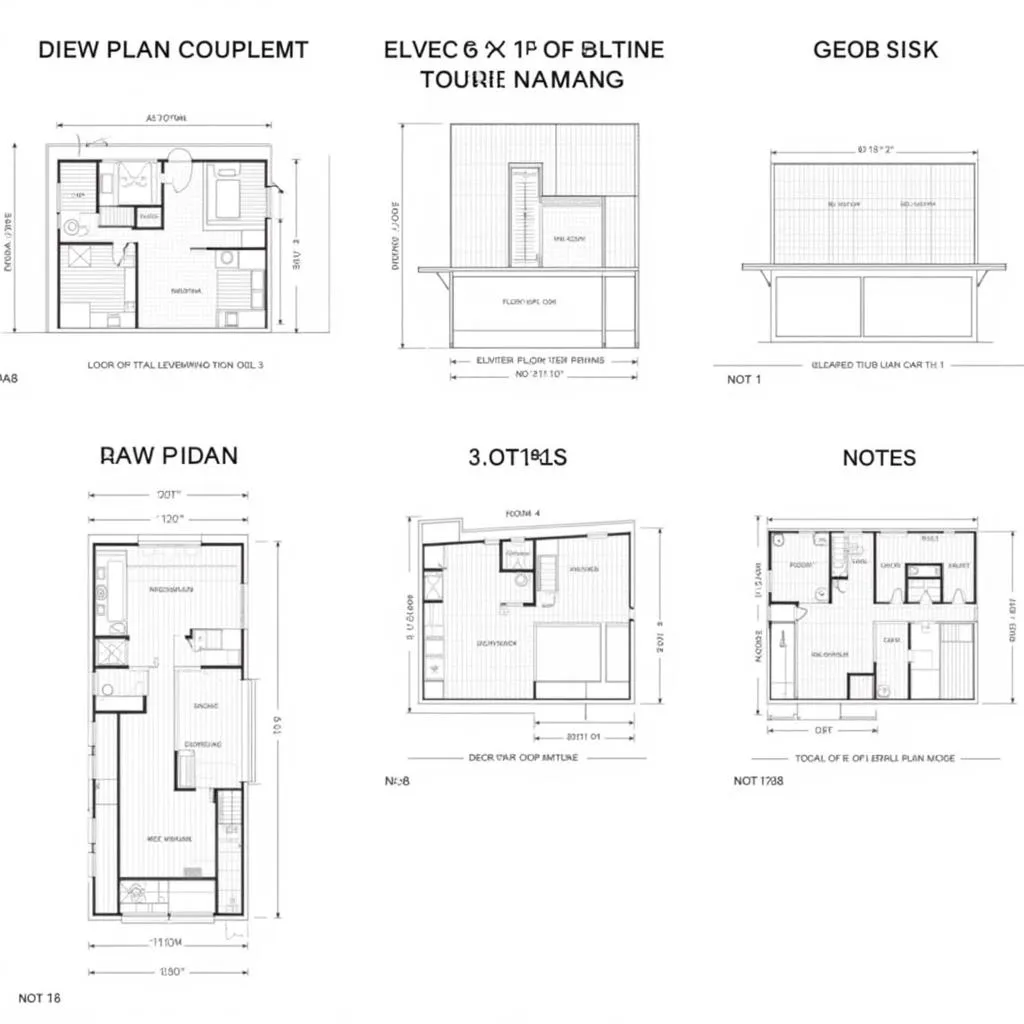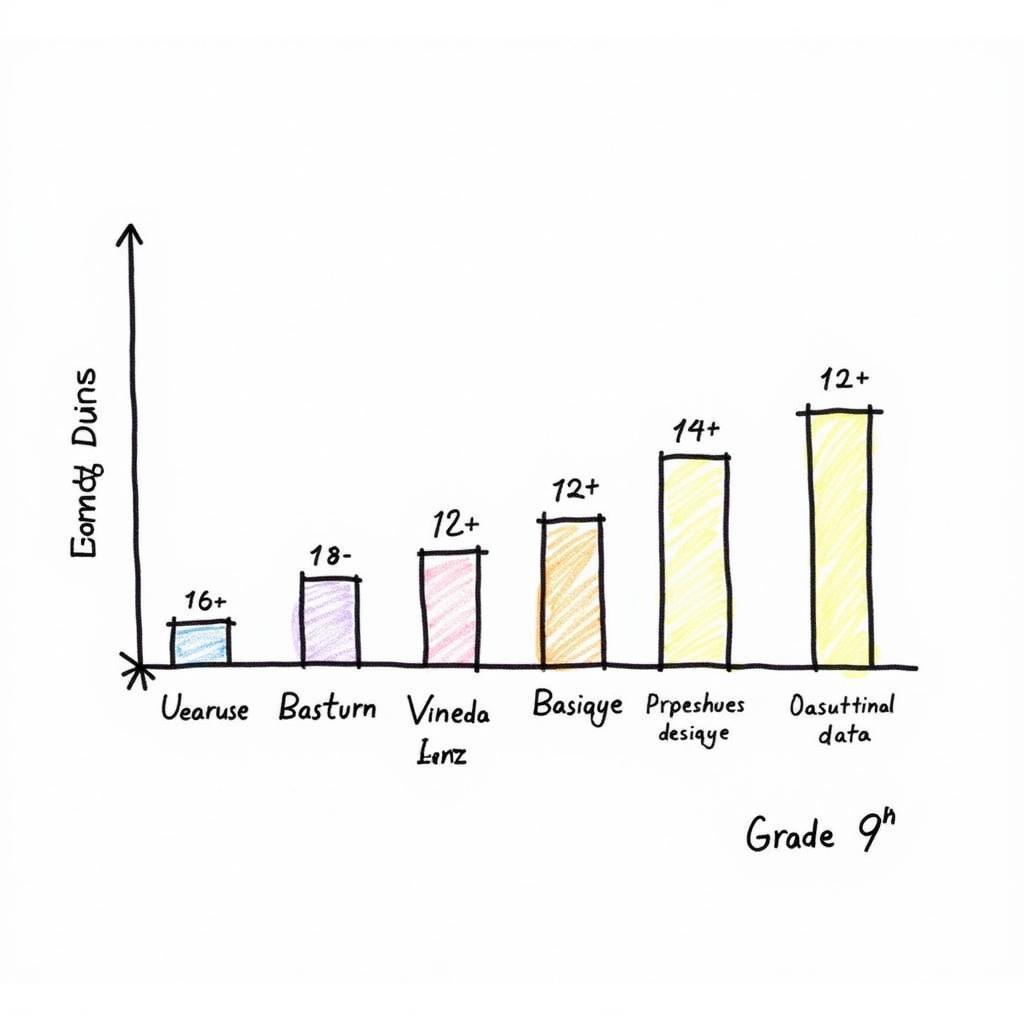“As-built drawings”, also known as “record drawings”, are an essential part of any construction or renovation project. They document the final built condition of a structure, reflecting any changes made during the construction process. These drawings are crucial for facility management, future renovations, and even legal purposes.
Understanding the Importance of As-Built Drawings
Imagine finishing a complex construction project only to realize you don’t have accurate documentation of the final layout, including changes made during construction. This is where as-built drawings come in. They provide a reliable record of:
- Actual dimensions and locations: Deviations from the original design are common during construction. As-built drawings accurately reflect these changes, ensuring future work is based on reality.
- Installed equipment and materials: Detailed information about the specific materials and equipment used, including manufacturers and model numbers, is recorded.
- Hidden infrastructure: The location of pipes, wires, and other hidden elements is documented, preventing accidental damage during future work.
Why are As-Built Drawings So Important?
 Importance of As-Built Drawings
Importance of As-Built Drawings
As-built drawings act as the single source of truth for the built environment, offering numerous benefits:
- Facilitating future renovations: Accurate drawings simplify planning and reduce the risk of costly errors during renovations.
- Streamlining maintenance: Knowing the exact location of systems and components allows for efficient maintenance and repairs.
- Ensuring code compliance: As-built drawings provide proof of compliance with building codes and regulations.
- Resolving disputes: In case of disagreements or legal issues, as-built drawings serve as crucial documentation.
Key Elements of As-Built Drawings
As-built drawings typically include:
- Floor plans: Show the final layout of each floor, including walls, doors, windows, and fixed installations.
- Elevations: Depict the exterior walls and vertical elements of the building, including changes in elevation.
- Sections: Provide a cutaway view of the building, showing the internal structure and components.
- Details: Zoom in on specific areas or elements, providing detailed information about construction and materials.
- Schedules: List and quantify materials, finishes, and equipment used in the project.
- Notes and Revisions: Clearly indicate any deviations from the original design, along with dates and descriptions of the changes.
Common Terminology Used in As-Built Drawings
- RFI (Request for Information): A formal request for clarification or additional information from the contractor or designer.
- Shop drawing: A detailed drawing submitted by the contractor or subcontractor, showing how they intend to fabricate or install a specific element.
- Field Verification: The process of physically checking and verifying dimensions, locations, and installations on-site to ensure they match the as-built drawings.
 Key Elements of As-Built Drawings
Key Elements of As-Built Drawings
Creating and Maintaining As-Built Drawings
Creating as-built drawings is an ongoing process throughout the construction project:
- Start with the original drawings: Use the original design drawings as a baseline and mark any changes directly on them.
- Update throughout construction: Continuously update the drawings as changes occur, ensuring they reflect the most current information.
- Use clear and consistent notation: Develop a standard system for marking revisions and use consistent symbols and abbreviations.
- Conduct thorough field verification: Regularly verify measurements and installations on-site to maintain accuracy.
- Finalize upon project completion: Once construction is complete, review and finalize the drawings, incorporating all changes and approvals.
Tips for Effective As-Built Documentation
- Embrace technology: Utilize digital tools and software for creating, managing, and sharing as-built drawings electronically.
- Establish clear communication: Maintain open communication channels between the design team, contractors, and subcontractors to ensure all changes are documented.
- Prioritize accuracy and detail: Treat as-built drawings with the same level of detail and accuracy as the original design drawings.
Conclusion
As-built drawings are invaluable resources for anyone involved in the lifecycle of a building. They provide a reliable record of the final built condition, facilitating future renovations, maintenance, and decision-making. By understanding the importance of as-built drawings and implementing best practices for their creation and maintenance, you can ensure the long-term value and usability of these crucial documents.
Frequently Asked Questions (FAQs)
1. Who is responsible for creating as-built drawings?
While the contractor typically handles the updates during construction, the architect or engineer is ultimately responsible for ensuring the final as-built drawings are accurate and complete.
2. What is the difference between as-built drawings and shop drawings?
Shop drawings are detailed drawings submitted by contractors before fabrication or installation, while as-built drawings document the final, installed conditions.
3. Can as-built drawings be in electronic format?
Yes, with advancements in technology, as-built drawings are increasingly created and managed electronically using Building Information Modeling (BIM) software and other digital platforms.
4. How often should as-built drawings be updated during construction?
Updates should be made regularly throughout the construction process, ideally whenever a significant change is made to the design or installation.
5. What are the consequences of inaccurate as-built drawings?
Inaccurate drawings can lead to costly mistakes during future renovations, safety hazards during maintenance, and legal disputes.
 Benefits of As-Built Drawings
Benefits of As-Built Drawings
Need help with your “as-built drawings” or have further questions? Contact us at Phone Number: 02933878955, Email: lophocve@gmail.com or visit our address: QCRW+366, Vị Tân, Vị Thanh, Hậu Giang, Việt Nam. Our customer service team is available 24/7. We also encourage you to explore our website for additional resources and related articles on architectural drawings and construction documentation.

